

Liverworts are small flowerless plants with leaf-like lobes called a thallus that looks similar to a lobed liver, hence their common name.
BIFID CRESTWORT
Lophocolea bidentata
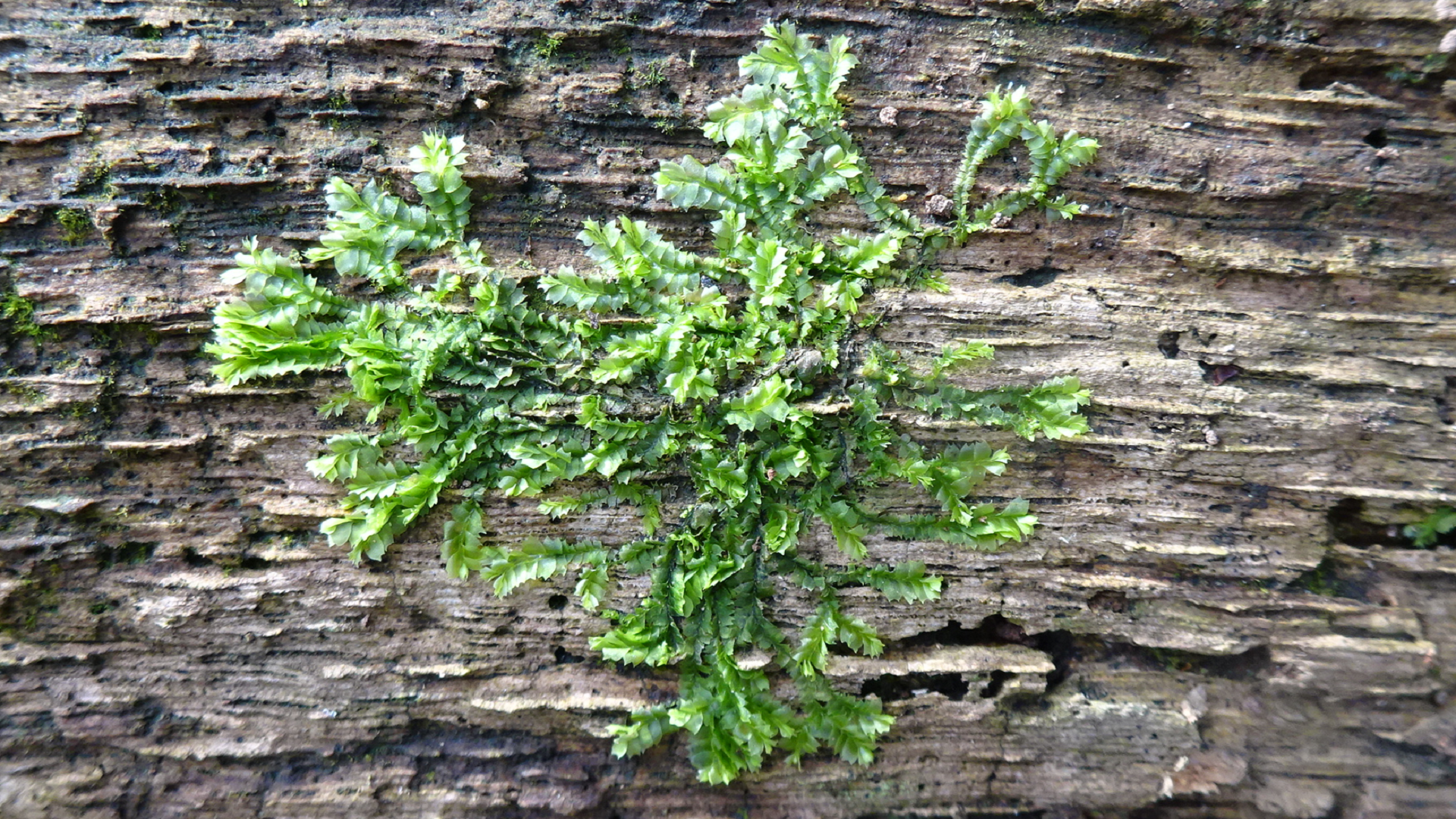
© Raymond Small TQ4893 04/03/2017
Tiny liverwort
Lophocolea bidentata growing on a rotting log along Cavill's walk.
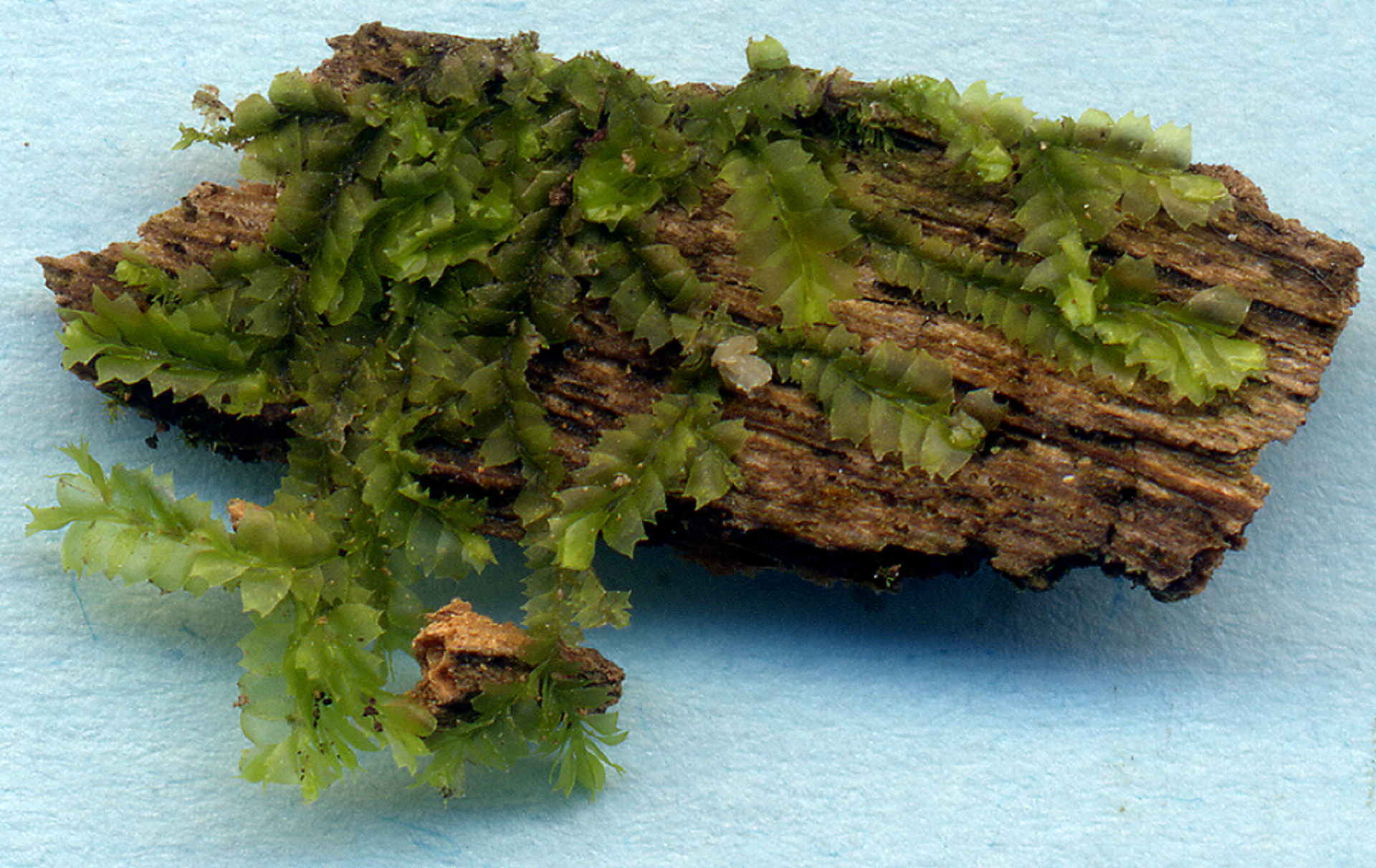
© Brian Ecott TQ4893 05/03/2017
A small sample of Lophocolea bidentata on a piece of wood measuring 2cm. Each of the leaves along the stem have two teeth, hence "bidentata".
VARIABLE-LEAVED CRESTWORT
Lophocolea heterophylla
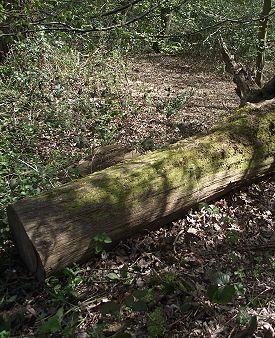
© Brian Ecott 08/04/2015
A fallen hornbeam trunk without bark is showing green patches of a leafy liverwort which on examination shows two rows of tiny leaves.
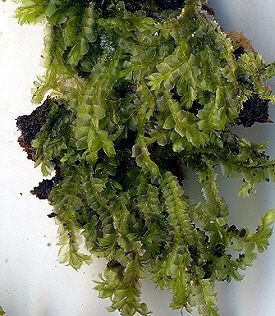
© Brian Ecott 08/04/2015
The leaves are entire at the tip of stem with lower leaves bidentate or two toothed.
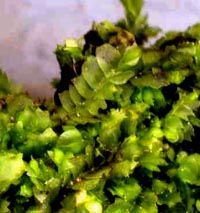
© Brian Ecott 08/04/2015
L. heterophylla has bidentate leaves which change to more rounded leaves towards the tip of the branch.
SOUTHERN CRESTWORT
Lophocolea semiteres
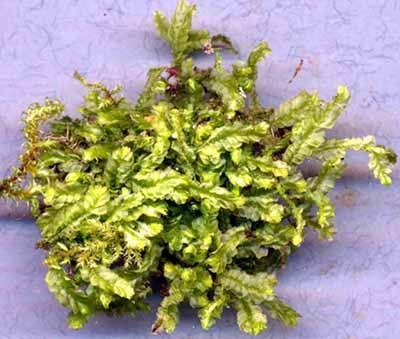
© Brian Ecott 04/04/2004
An alien liverwort from the southern hemisphere growing on rotting hornbeam. This was the first record in Hainault Forest.
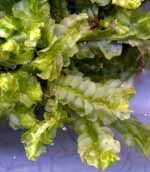
© Brian Ecott
Lophocolea semiteres has overlapping, rounded leaves. It is larger than L.bidentata and L.heterophylla. Also found in Epping Forest.
FORKED VEILWORT
Metzgeria furcata
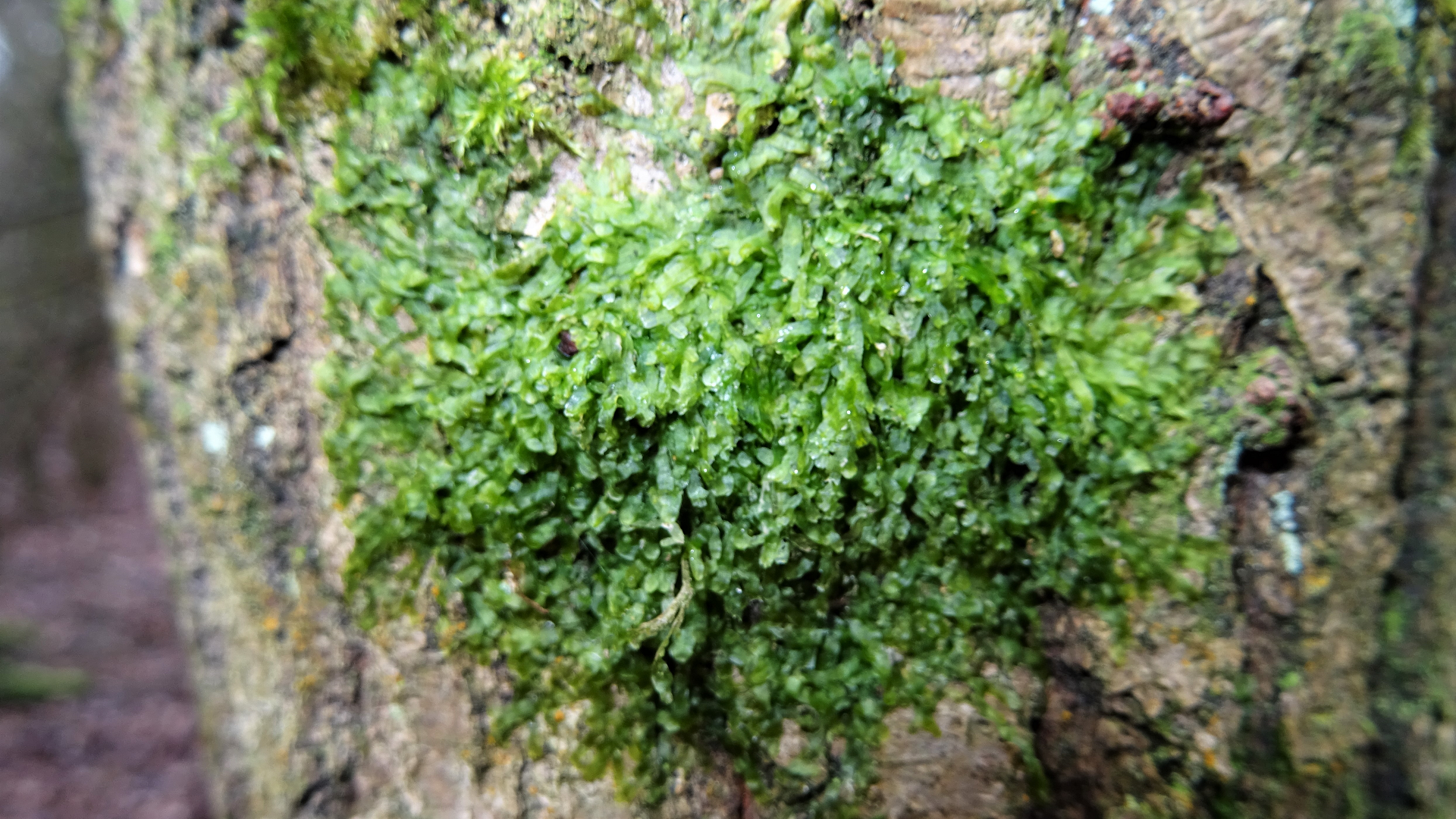
© Raymond Small TQ4693 26/03/2018
One of the commonest Liverworts in Hainault Forest. The yellowish-green patches contrast with other green colours on trunks. It is a common lowland species found especially in association with Ash trees.
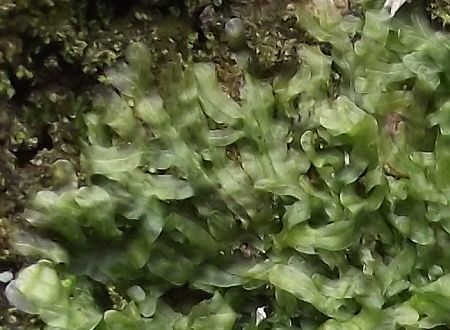
© Brian Ecott TQ4792 13/03/2016
Forked veilwort on an Ash tree at Sheepwater. It
has thin strips of tissue known as thalli. Each thallus (singular) is approx 1mm in width and is divided into two (bifurcate). It has a thickened midrib.
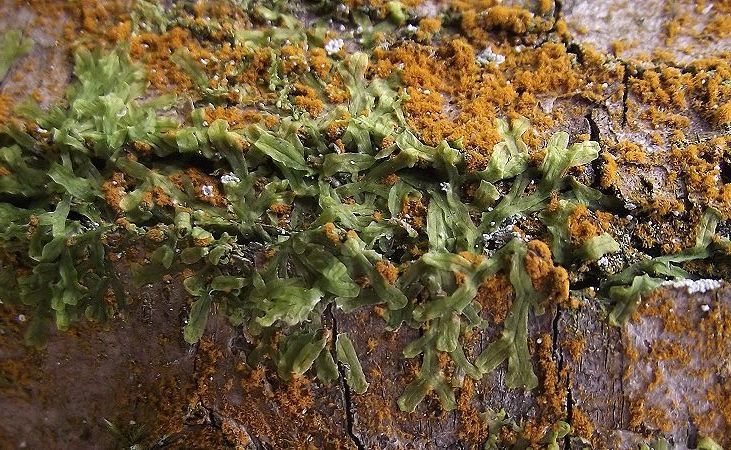
© Brian Ecott TQ4793 02/03/2017
Metzgeria furcata on hawthorn. The lobe ends divide into two which shows quite well in this picture.
CRESCENT-CUP LIVERWORT
Lunularia cruciata

© Raymond Small TQ4793 10/03/2022
This liverwort grows at the water's edge in Olgit's DItch. A half moon structure (gemmae cup) in some lobe centres contain gemmae that detach from the parent plant and develop into new individuals. This species is found on banks and along woodland rides and is often present as a weed of greenhouses and flower pots.

© Brian Ecott TQ4793 08/02/2015
The name 'Crescent-cup' refers to its Moon-shaped cups which contain disc-like gemmae that get washed out of the cups and grow into new plants.
EVEN SCALEWORT
Radula complanata
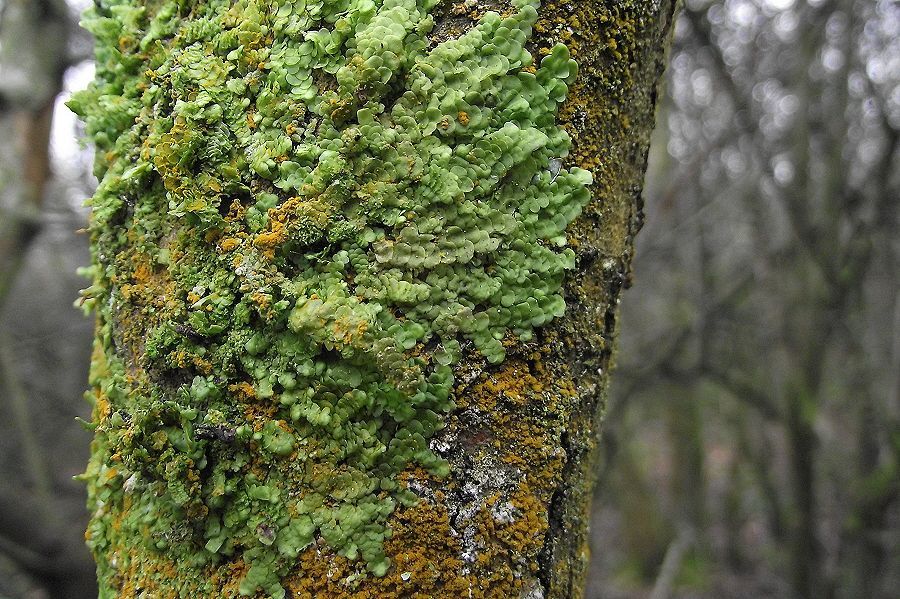
© Brian Ecott TQ4792 04/12/2016
On hawthorn scrub near Hainault Lake. Although widespread in UK it is the first time Brian Ecott had seen it in Hainault Forest. With thanks to Dr. Kenneth Adams, Recorder of Botany and Bryophytes, Essex Field Club, for the identification.
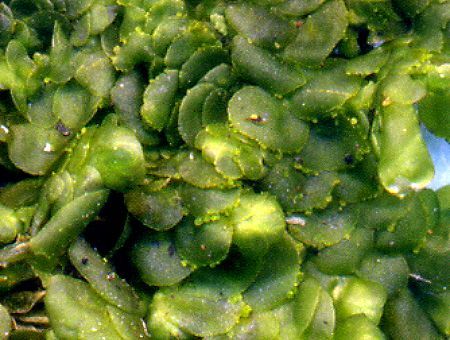
© Brian Ecott TQ4792 05/03/2017
Tiny yellow-green gemmae lining the frond edges which break off to form new plants.
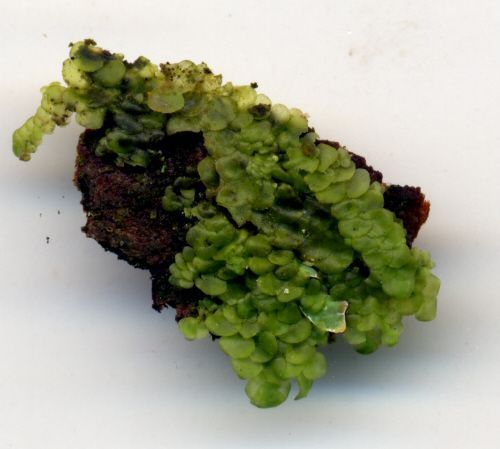
© Brian Ecott TQ4792 04/12/2016
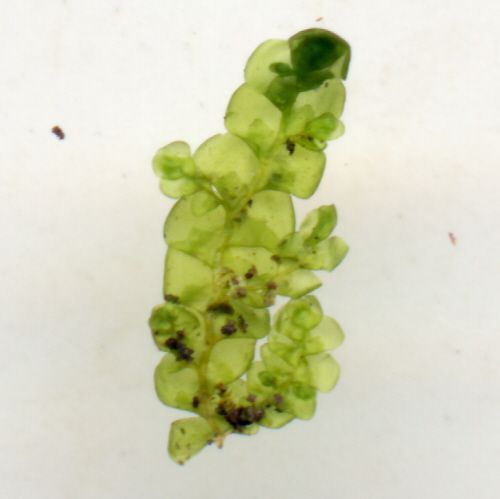
© Brian Ecott TQ4792 04/12/2016
DILATED SCALEWORT
Frullania dilatata
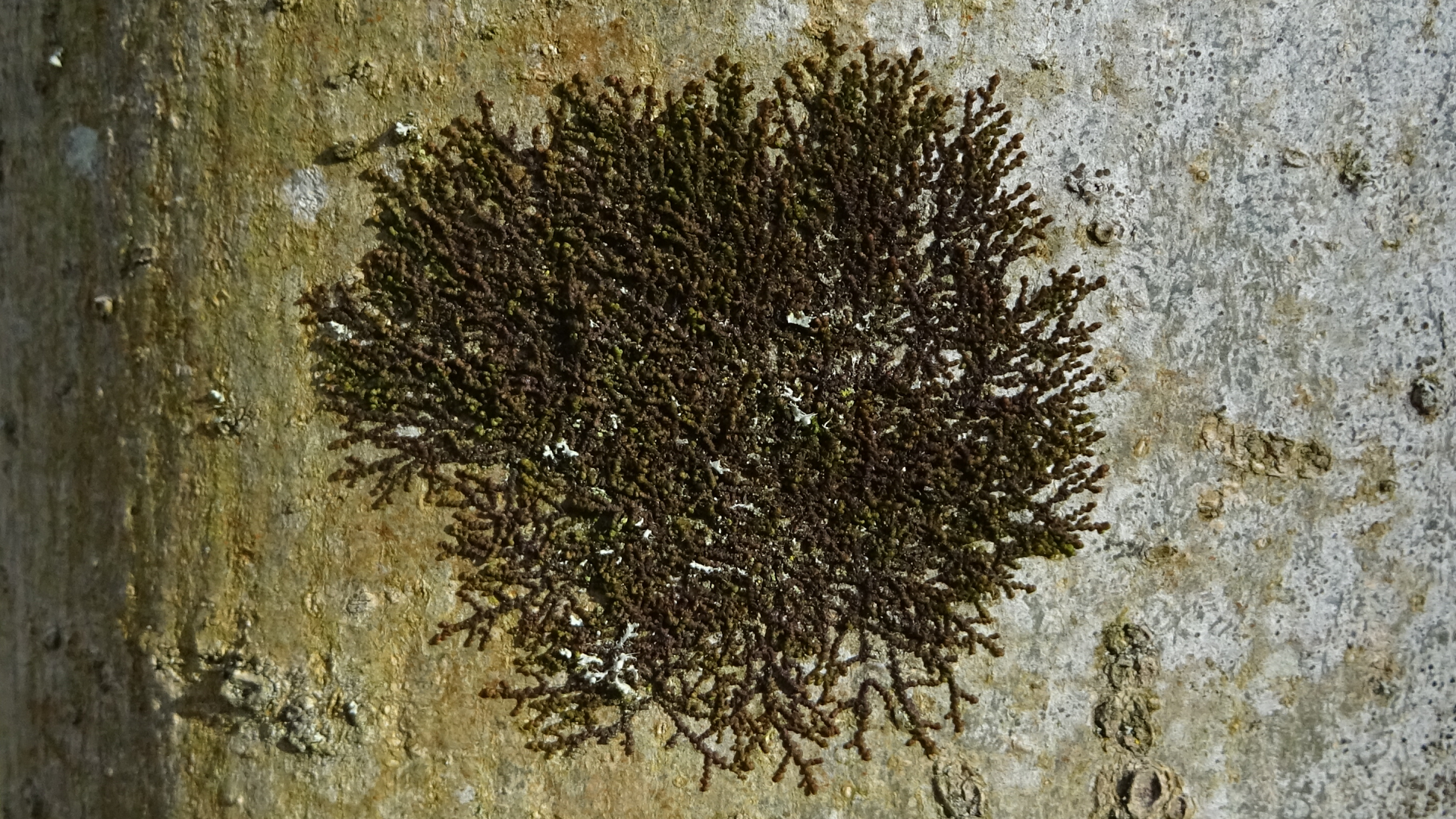
© Raymond Small TQ4691 18/02/2018
A patch of Liverwort measuring approximately 5cm across growing on an Ash tree trunk at the old Reservoir site on Hog Hill. With thanks to Dr. Kenneth Adams, Recorder of Flowering Plants and Bryophytes, Essex Field Club for his help in the procedures necessary to determine the identity.
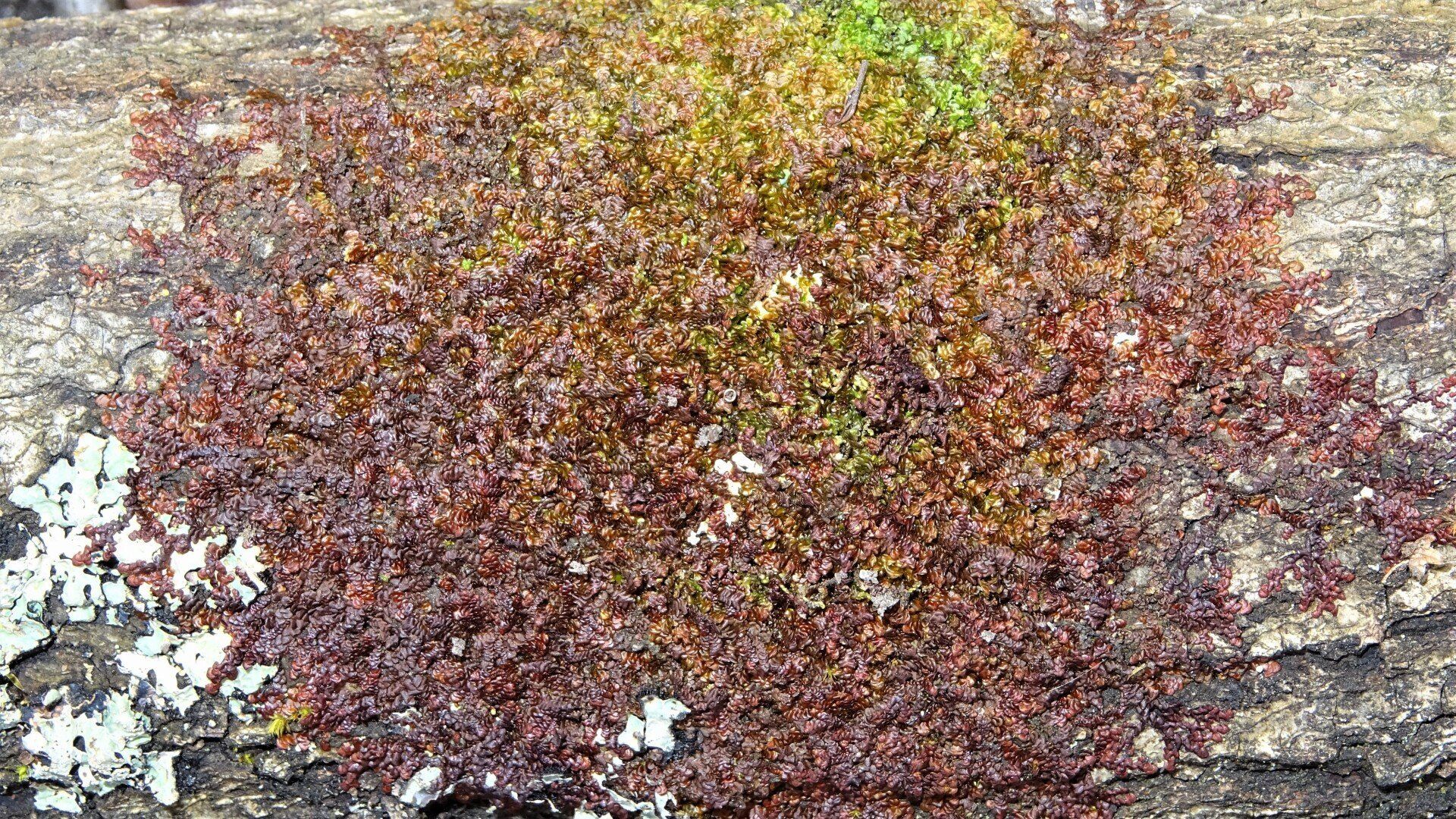
© Raymond Small TQ4792 06/03/2018
This normally well-pigmented Liverwort can be recognised easily from afar when it forms dark purple round patches on tree bark.Young growth may be green.
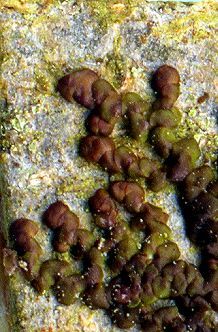
© Brian Ecott TQ4691 18/02/2018
Close up of upper part of liverwort.
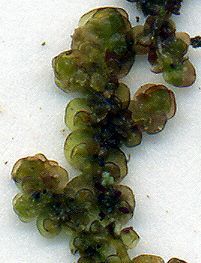
© Brian Ecott TQ4691 18/02/2018
Close up of underside, lateral leaves rounded.
© hainaultforest.net. All rights reserved.